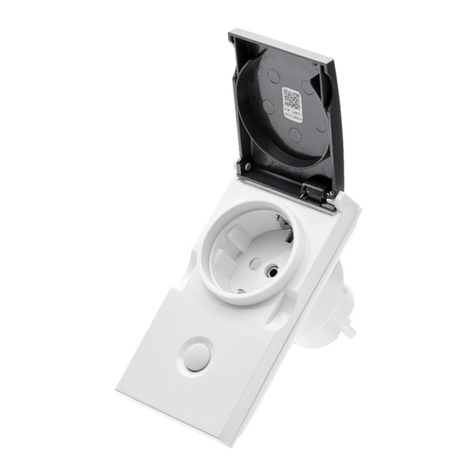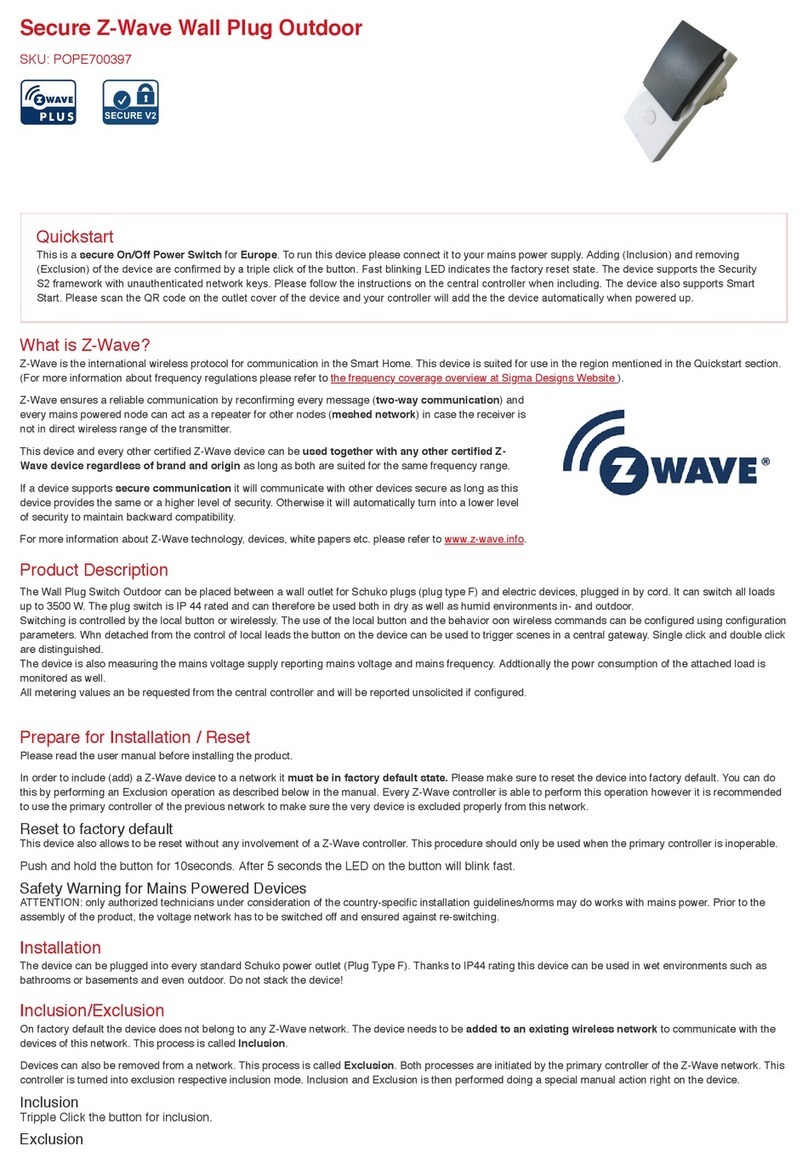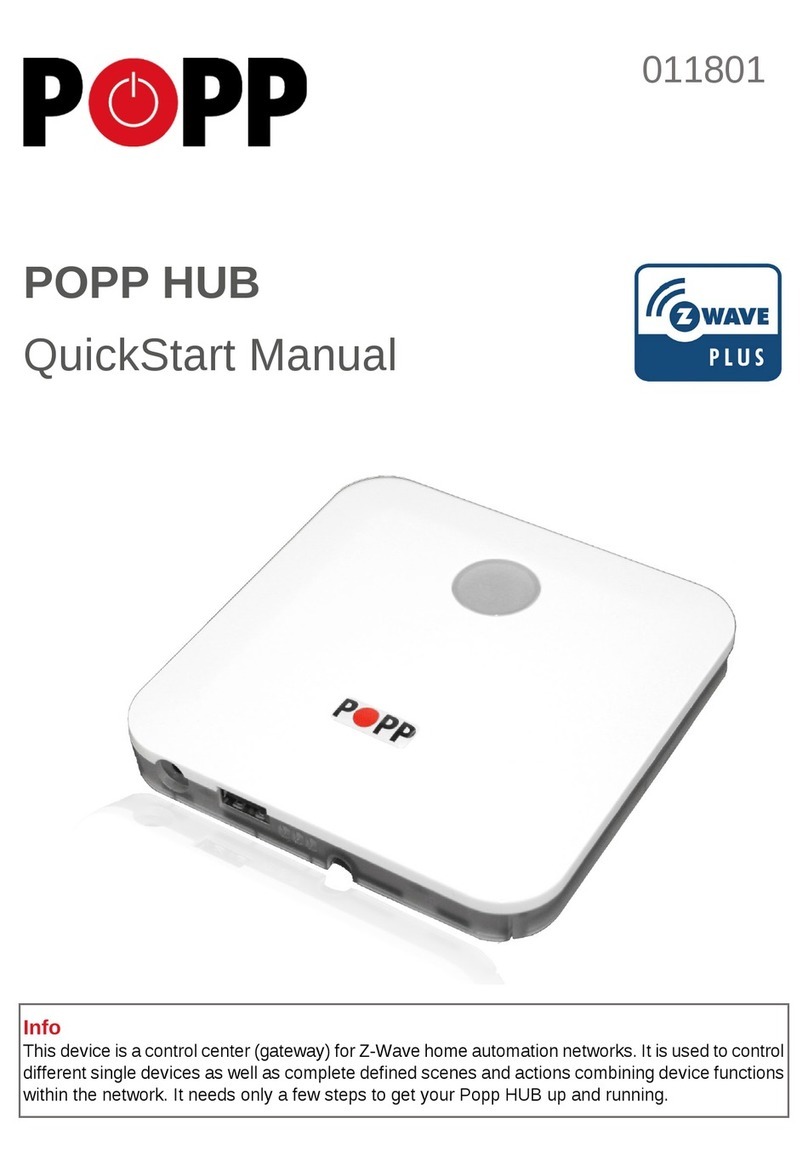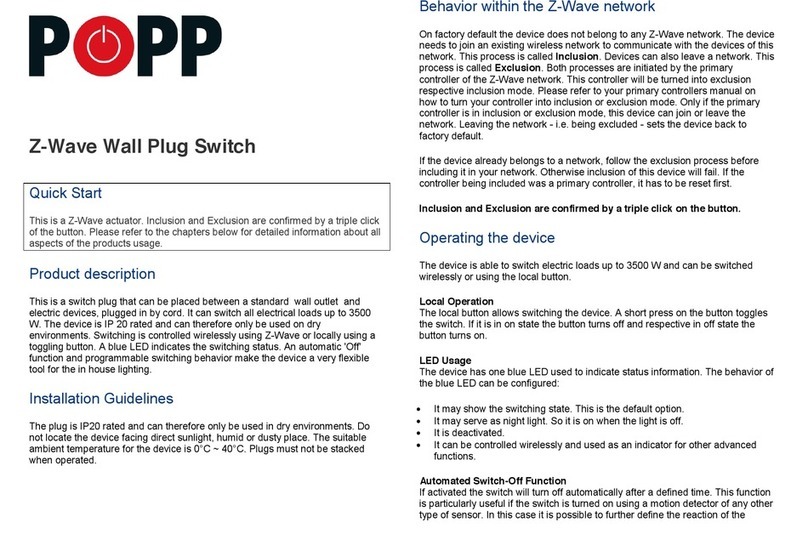2
Wall Plug Switch Schuko (IP44) – Manual
Quick Start........................................................................................................................................................................... 2
Product Description............................................................................................................................................................. 2
Before Installation................................................................................................................................................................ 2
Installation Guidelines ......................................................................................................................................................... 3
Behavior within the Z-Wave Network.................................................................................................................................. 3
Operating the Device........................................................................................................................................................... 3
Child Protection ................................................................................................................................................................... 4
Association .......................................................................................................................................................................... 4
Configuration Parameters ................................................................................................................................................... 4
Command Classes.............................................................................................................................................................. 5
Technical Data .................................................................................................................................................................... 6
Explanation of Z-Wave specific Terms ............................................................................................................................... 6
Support ................................................................................................................................................................................ 7
Quick Start
This is a Z-Wave actuator. Inclusion and Exclusion are confirmed by a tripple click of the button. Fast blinking LED
indicates the factory reset state.
Please refer to the chapters below for detailed information about all aspects of the products usage.
Product Description
This is a plug switch that can be placed between a wall outlet for Schuko plugs (plug type F) and electric devices,
plugged in by cord. It can switch all loads up to 3500 W. The device is IP 44 rated and can therefore be used both in
dry environments as well as humid environments and outdoor. Switching is controlled wirelessly using Z-Wave or
locally applying a button. A multi color LED indicates the switching status and the assignment of the colors to the
switching status can be defined by the user. The device will report any change of the switching status to a central
gateway regardless the origin of the switch (local or wireless). A built in virtual power meter will report the power
consumption of the load attached. However the user must configure the assumed constant power draw of the load.
The local button can control the local load but can also be used to control other functions in a Z-Wave network. The
device is certified and tested against all important European Safety Regulations and fully complies with the Z-Wave
Plus standard. The device supports secure communication and the firmware can be upgraded over the air (OTA).
Before Installation
Please read carefully the enclosed user manual before installation of the radio-actuator, in order to ensure an error-free
functioning.
ATTENTION: Only authorized technicians under consideration of the country-specific installation guidelines/norms may
do works with 230 Volt mains power. Prior to the assembly of the product, the voltage network has to be switched off
and ensured against re-switching. The product is permitted only for proper use as specified in the user manual. Any
kind of guarantee claim has to be forfeited if changes, modifications or painting are undertaken. The product must be
checked for damages immediately after unpacking. In the case of damages, the product must not be operated in any
case. If a danger-free operation of the equipment cannot be assured, the voltage supply has to be interrupted
immediately and the equipment has to be protected from unintended operation.





























